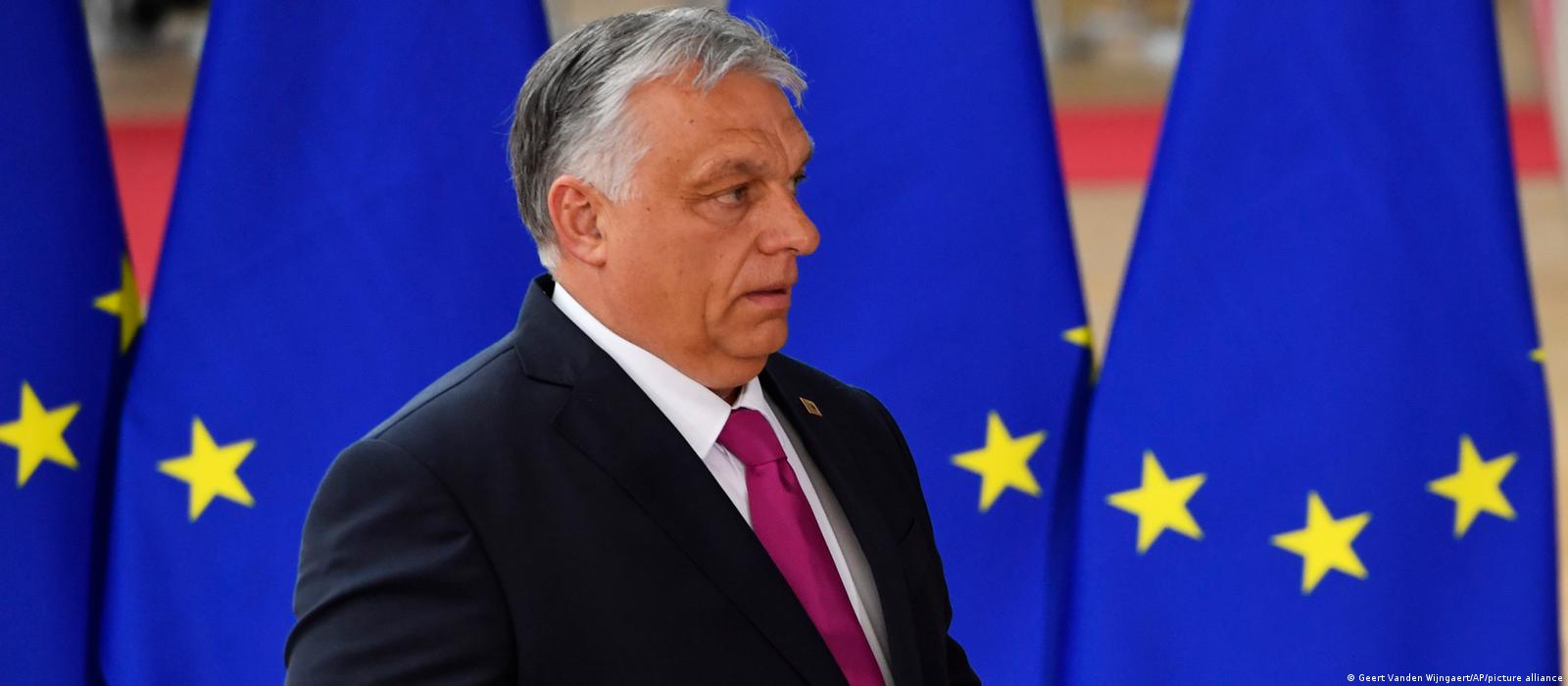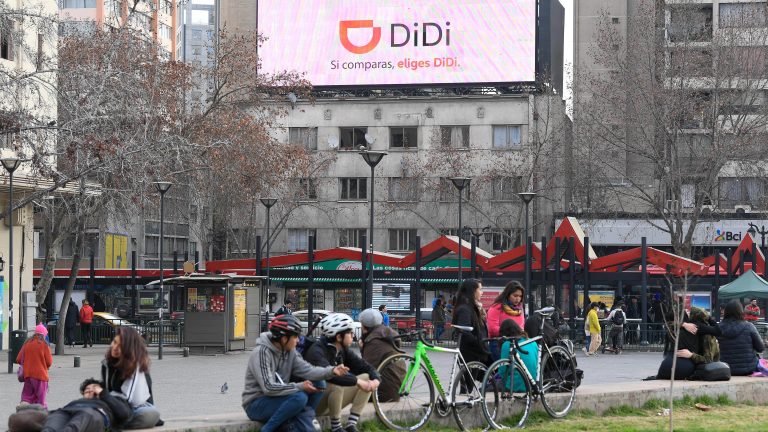
Hungary: What's Viktor Orban's problem with Ukraine?
Keno Verseck
12/12/2022
Ever since Russia invaded Ukraine in February, Hungary has been blocking EU support for the war-torn country. This is nothing new: Ukraine has long been a hostage of Viktor Orban's domestic and foreign policies.
"A veto game," "a foreign policy low," "running amok" — these are just some of the phrases used by independent Hungarian media in recent days to describe Hungarian Prime Minister Viktor Orban's veto of EU financial assistance for Ukraine. The weekly newspaper HVG even asked, "What does the Orban government actually have against the loan for Ukraine?"
For months, there has been speculation as to whether Hungary really would veto the bloc's planned €18 billion loan ($19 billion) for Ukraine. Right up to the end, many European politicians hoped that Orban was bluffing.
But on December 6, Orban really did carry out his threat and blocked the financial package in Brussels. A short time later, he took to Twitter to deny Hungary had used its veto: "This is fake news. [...] No veto, no blackmailing." He also said that Hungry was willing to support Ukraine on a bilateral basis.
Whether it was a real veto or not, Hungary's blocking of EU aid for Ukraine is the most recent low in an already problematic relationship between the two countries. Since Russia invaded Ukraine on February 24, there has been a whole series of such lows.
Hungary's stance on Russia's invasion of Ukraine
To begin with, Orban and his government were slow to condemn Russia's aggression and describe it as contrary to international law. To this day, Orban speaks of a "Russian–Ukrainian war." He also repeatedly emphasizes that "this is not our war" and says that it is a "dispute that the relevant parties should settle among themselves."

Orban recently said that Hungary was interested in having a "sovereign state between Russia and Central Europe that we will, for the sake of simplicity, now call Ukraine." A short time later, he was photographed at a match involving the Hungarian soccer team wearing a scarf with an image of "Greater Hungary" — the territory covered by Hungary until the end of World War I, which included parts of modern-day Ukraine.
Orban's strategic use of Hungary's veto in the EU
Although Hungary has for the most part gone along with the EU's sanctions against Russia, it did veto planned sanctions against Patriarch Kirill, who is the head of the Russian Orthodox Church and a notorious warmonger.
Orban has, however, negotiated sweeping exemptions for his country such as on the boycott of Russian oil. He has also repeatedly voiced harsh criticism of sanctions against Russia. Indeed the government in Budapest is currently running a campaign in Hungary that accuses the EU of destroying Hungary's economy with its anti-Russian sanctions.

What's more, Orban has rejected the delivery of arms to Ukraine, refusing to allow the transit of weapons shipments through Hungarian territory.
Viktor Orban: Former supporter of Ukraine
So what is Orban's problem with Ukraine? It is worth noting that Hungary's prime minister was once an emphatic supporter of a democratic Ukraine with Euro-Atlantic ambitions.
At its summit in Bucharest in April 2008, NATO decided not to admit Ukraine and Georgia to the military alliance. A few months later, just after the start of Russia's war against Georgia, Orban said that this had been a bad decision. At the time, he was still a member of the opposition.
Support for Ukraine's Hungarian minority
But Orban sang a very different tune once he became prime minister in 2010. There has been considerable ill-feeling between Hungary and Ukraine because of the Hungarian minority living in the western Ukrainian region of Transcarpathia. When Orban became prime minister in 2010, just under 200,000 ethnic Hungarians lived there; today, this figure has dropped to 130,000.

Budapest was, for example, unhappy about a planned Ukrainian language law that was primarily intended to reduce the influence of the Russian language in Ukraine. Orban's government felt it also targeted the Hungarian minority in the country.
Accusations of separatism
The welfare of Hungarian minorities living in Hungary's neighboring counties has been a continual concern of governments in Budapest in the post-communist era. But after 2010, Orban took things several steps further.
Just a few weeks after Russia annexed Crimea in 2014, Orban gave a speech in which he called for autonomy, collective rights and the right to dual citizenship for the Hungarian minority in Ukraine. His choice of words left him open to accusations of separatism.
Secret citizenship
Hungary has on a number of occasions since 2017 — and most recently in early February 2022 — vetoed NATO cooperation with Ukraine because of Ukraine's policy on minorities.
In September 2018, the issue of dual citizenship caused a major diplomatic rift between the two countries. At the time, a leaked video showed Ukrainian citizens at the Hungarian consulate in Berehove (Beregszasz) secretly being granted Hungarian citizenship, which was against the law in Ukraine.
Courting far-right voters in Hungary
Ever since, diplomatic relations between Hungary and Ukraine have been icy. The visit to Kyiv by Hungarian President Katalin Novak, a loyal Orban supporter, at the end of November is unlikely to have changed this.

Overall, however, Orban's Ukraine policy is less likely to be about the country itself and more about other domestic and foreign policy priorities. With his ambivalent words about autonomy for the Hungarian minority in Ukraine or the statehood and sovereignty of that country, Orban is above all targeting far-right voters in Hungary who still dream of a "Greater Hungary" and its pre-1918 boundaries.
EU politicians believe Orban is blackmailing the bloc
On the foreign policy front, Hungary's close ties to Russia are more important to Orban than a good relationship with Ukraine. The reason for this is simple: Hungary is dependent on Russian energy supplies. In other words, every anti-Ukrainian statement from Budapest is also an indirect declaration of loyalty to Moscow.

Such statements include Orban's repeated insinuations that the West is to blame for Russia's war on Ukraine. He seems to be increasingly of the conviction that "the West" — and in particular the USA — pushed Russia into the war against Ukraine and is now waging a proxy war there.
But for Orban, it is also about having a means of exerting pressure on the EU in the matter of the yearslong dispute about the rule of law in Hungary. The EU will soon be deciding whether to withhold billions of euros in funding for Hungary because of corruption and deficiencies in the rule of law there. Even if Orban disputes the fact, there is hardly a politician in the EU that doubts that Hungary is blackmailing the EU with its veto on financial assistance for Ukraine.
In short, Ukraine has long been a hostage of Orban's domestic and foreign policies. But the person who benefits most from all this is not Hungary's prime minister himself, but someone else entirely, namely Russian President Vladimir Putin.
This article was originally published in German.






/cdn.vox-cdn.com/uploads/chorus_image/image/71739283/1243408219.0.jpg)
:no_upscale()/cdn.vox-cdn.com/uploads/chorus_asset/file/24279004/1245350281.jpg)


